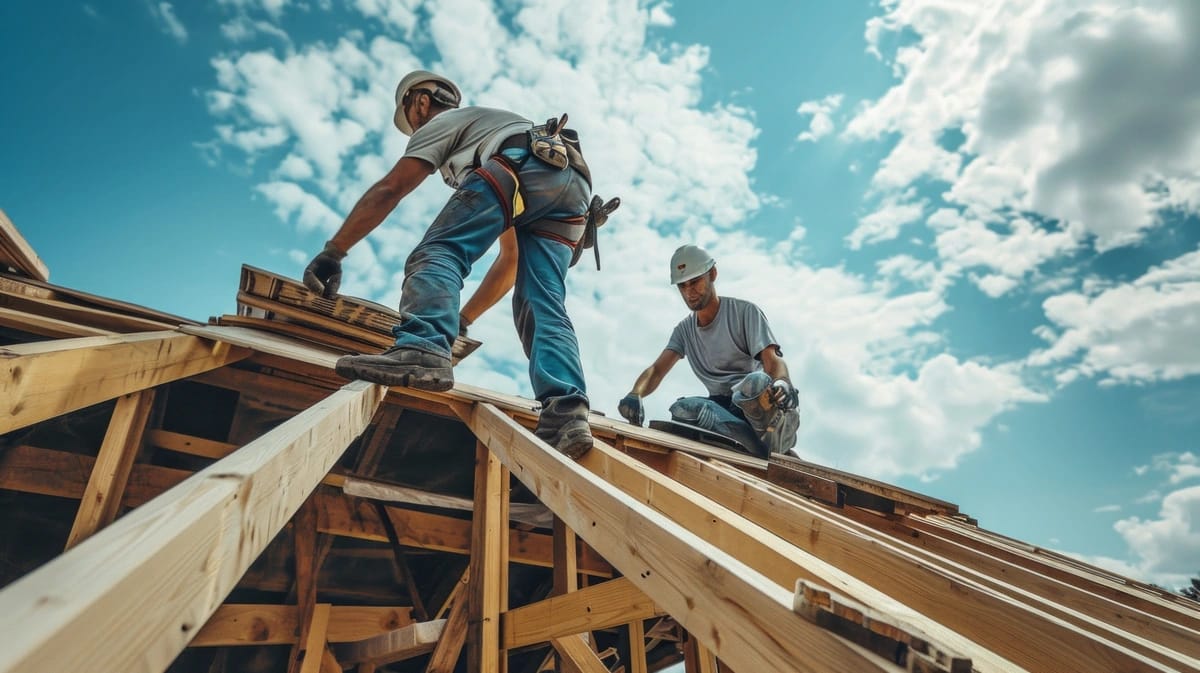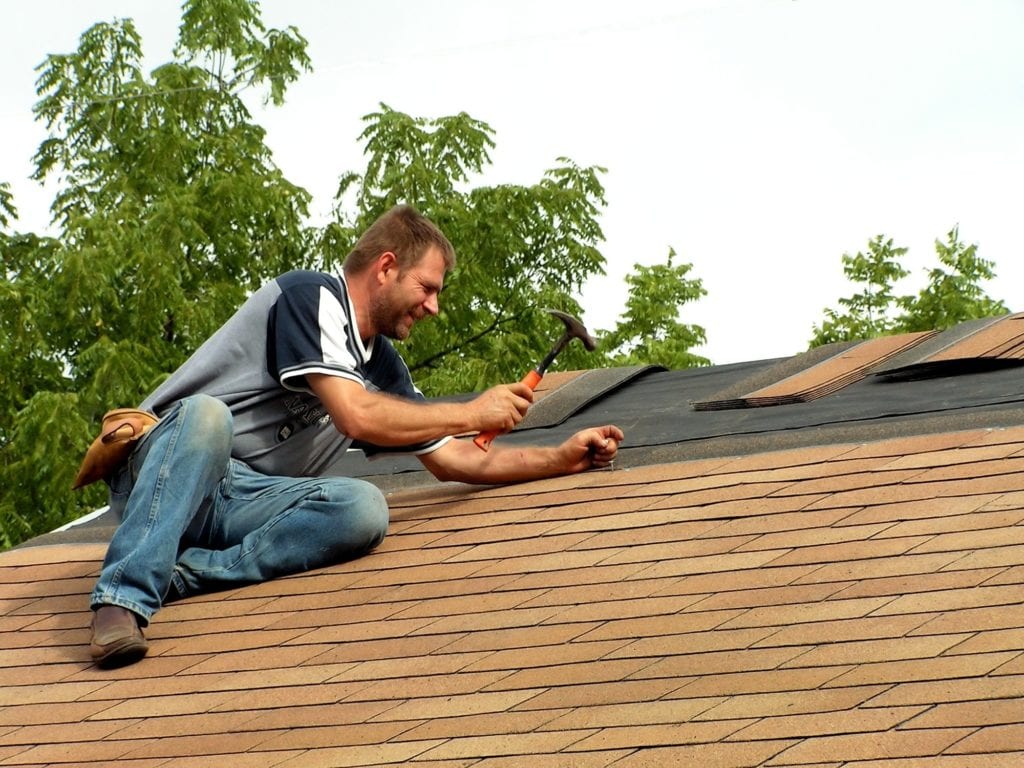Roofing Companies Oahu: Relied On Experts for Your Roofing Demands
Recognizing the Various Kinds Of Roofs: A Comprehensive Guide for Homeowners
In the world of homeownership, selecting the appropriate roofing style is a decision that carries significant ramifications for both performance and aesthetic charm. With an array of choices-- varying from the conventional gable to the contemporary level-- each kind provides special advantages and obstacles that ought to align with the home owner's environmental considerations and details demands. Comprehending these distinctions not only aids in making an informed choice yet also affects lasting upkeep and power effectiveness. As we discover the details of various roof kinds, it becomes obvious that dimension does not fit all; the appropriate selection might surprise you.
Saddleback Roof
Saddleback roofs, defined by their triangular form, are among the most prominent roof styles as a result of their simpleness and effectiveness in losing water and snow. This design includes 2 sloping sides that meet at a ridge, permitting for efficient drain and decreasing the risk of water build-up. The high pitch typically related to saddleback roofs improves their capacity to handle heavy rainfall, making them ideal for numerous climates.
Along with their functional advantages, gable roofs provide visual versatility. They can be adapted to various building designs, from traditional to contemporary homes. The style can additionally suit added features such as dormer windows, which enhance natural light and ventilation in the attic area.
Additionally, saddleback roofs provide ample space for insulation, adding to energy efficiency. House owners can select from a selection of roof covering products, consisting of asphalt roof shingles, steel, and ceramic tiles, additionally improving modification alternatives.
Regardless of their benefits, saddleback roofs may need additional support in areas vulnerable to high winds or hefty snowfall. Generally, the gable roof covering continues to be a popular option because of its mix of capability, longevity, and visual charm.
Flat Roofs
Level roofs are frequently identified for their minimal design and useful applications, especially in industrial and industrial settings (oahu roofing). These roofing systems include a straight or almost horizontal surface area, which permits easy building and construction and flexible space utilization. While they might lack the visual charm of pitched roofing systems, level roofings offer many advantages, especially in city atmospheres where making best use of area is essential
Among the main advantages of flat roof coverings is their availability. Homeowners can use the roof area for various functions, such as roof gardens, balconies, or solar panel setups. Additionally, level roofs are normally more economical to keep and install compared to their sloped equivalents, as they require fewer products and labor.
Nonetheless, flat roofings do existing certain difficulties. Correct drainage is important to prevent water pooling, which can cause leakages and structural damage. Therefore, picking top quality waterproofing materials and routine assessments are crucial for guaranteeing long life. Usual products used for flat roofing systems consist of built-up roof covering (BUR), changed bitumen, and single-ply membranes, each offering distinct benefits. In general, level roofings work as a versatile and useful choice for many home owners and organizations alike.
Hip Roof Coverings
Hip roof coverings are defined by their sloped sides that assemble at the top, forming a ridge. This layout stands out from saddleback roofs, as all 4 sides of a hip roof covering slope downwards toward the wall surfaces, giving an extra steady structure. The angle of the inclines can differ, enabling flexibility in building visual appeals and functionality.
Among the main advantages of hip roofs is their capacity to stand up to heavy winds and damaging weather condition conditions. The sloped surfaces allow better water drain, lowering the risk of leaks and water damages. Furthermore, hip roofing systems offer enhanced attic room area, which can be utilized for storage space or even transformed into comfortable areas.
Nonetheless, building a hip roof covering can be a lot more complex and expensive than simpler roofing kinds, such as gable roofings. The additional material and labor entailed in creating the inclines and ensuring appropriate architectural integrity can cause greater expenses. In spite of these drawbacks, numerous home owners favor hip roof coverings for their durability, aesthetic allure, and potential for energy effectiveness.
Mansard Roof Coverings
Mansard roofs, typically identified by their unique four-sided style, function 2 inclines on each side, with the lower slope being steeper than the upper. This building design, stemming from France in the 17th century, is not just aesthetically appealing however practical, as it takes full advantage of the functional room in the top floorings of a structure. The steep lower slope enables more headroom, making it a suitable selection for attic rooms or loft spaces, which can be exchanged living rooms.
Mansard roofing systems are defined by their adaptability, suiting numerous building designs, from standard to contemporary. They can be created with different materials, including asphalt roof shingles, slate, or metal, providing property owners with see this here a variety of choices to fit their preferences and budgets. Additionally, the layout permits the assimilation of dormer home windows, improving natural light and ventilation in the upper levels.
However, it is important to consider the potential downsides. Mansard roof coverings might need more upkeep because of the complexity of their design, and their high slopes can be challenging for snow and rainfall overflow. In general, mansard roofing systems incorporate sophistication with practicality, making them a popular selection among property owners looking for unique architectural attributes.
Dropped Roofing Systems
As homeowners significantly seek simplicity and capability in their architectural layouts, dropped roofs have actually emerged as a preferred option. Characterized by a solitary sloping plane, a shed roof covering provides a minimal aesthetic that enhances different home designs, from contemporary to rustic.
Among the primary benefits of a shed roof is its simple construction, which usually translates to reduce labor and product costs. This style enables efficient water drainage, minimizing the risk of leaks and water damage. In addition, the vertical slope gives sufficient space for skylights, boosting natural light within the interior.
Lost roofing systems likewise offer adaptability in regards to use. They can be effectively integrated into additions, garages, or outside frameworks like structures and sheds. In addition, this roof style can accommodate different roof materials, including metal, asphalt roof shingles, or perhaps eco-friendly roofings, straightening with eco-friendly initiatives.
However, it is important to consider regional environment problems, as hefty snow tons might require changes to the roof covering's angle or framework. Generally, dropped roofings provide a useful and aesthetically pleasing option for home owners aiming to make the most of functionality without endangering design.
Final Thought


Gable roofing systems, defined by their triangular shape, are among the most preferred roof designs due to their simpleness and efficiency in dropping water and snow. oahu roofing. The high pitch commonly connected with gable roofings boosts their ability to manage hefty rainfall, making them ideal for different environments
While they might lack the aesthetic charm of pitched roofings, level roofing systems provide many advantages, specifically in urban settings where making the most of room is critical.
